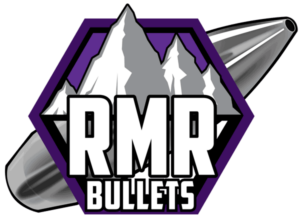SC
Forum Replies Created
-
AuthorPosts
-
SC
ParticipantA change in primers may help but I doubt it will shrink groups by half.
Have you measured velocities with a chronograph?
SC
ParticipantAccuracy starts with a good barrel. How well will the gun shoot with factory ammo?
SC
ParticipantThat seems short to me. I am using a 135 TC (truncated cone) from another brand and the OAL is 1.130. Thousands of them have been used in an HK P30, but I also use the same load in a G19 and a PCC AR which uses Glock mags.
Maybe try 1.100 or 1.120 and see how that works.
SC
Participant@Sadie Woolman-Morgan
What kind of differences in accuracy have you observed in rifle loads? Is the difference in 100 yard groups or further out?SC
ParticipantI don’t know what Jake would say, but I have tried the Lee FCD on the 69 3GH and it did not seem to make a difference.
SC
ParticipantPost that Jake, the owner of RMR made-
Post in thread ‘RMR’S 69 grain .224 bullets.’ https://www.thehighroad.org/index.php?threads/rmrs-69-grain-224-bullets.926611/post-12801960
May 24, 2024 at 5:07 am in reply to: Best seating dies/seating stems for .224 75 grain bthp? #515101SC
Participant+/- .003 is not going to matter much in most applications.
The variation could be because of a couple of things, not just the seating die. Bullet and neck tension variation, press tolerances, and compressed loads can affect seating consistency.
SC
ParticipantMore testing shows that neck tension definitely helps. I’m currently at 2.260 OAL and 24 grains of TAC. Next I am going to try 24.5 grains.
SC
ParticipantYes, it is on my batch as well. I’m currently working on load dev and will be shooting them tomorrow.
My last test groups were 1.5″ and .21″ They seem to be sensitive to neck tension. The .21 group was with more tension.
August 18, 2023 at 1:47 pm in reply to: 9MM 124 GR. RMR FMJ TRUNCATED CONE FLAT POINT MATCHWINNER BULLETS ISSUE #498005SC
ParticipantIf they plunk test then you are fine. The throat on the Wilson gauge is probably shorter or tighter than your barrel, and interfering with the different “ogive” on the truncated bullet.
SC
ParticipantKenneth-
What are you using for dies and are you crimping?
SC
ParticipantIs this for 9mm Major?
What is the power factor value that you are trying to achieve?
SC
ParticipantI don’t recall the exact numbers but I know that the 124/WSF load made 125+ PF
The 135/CD load I use in a 3-gun match where power factor is not considered. It just needs to be able to knock down some steel targets.
SC
ParticipantWhat was your Titegroup load?
I’m only running 3.1 grains of Clay Dot behind a 135 polycoated and it is definitely softer than my target load of 5.0 WSF behind a 124HP.
Be careful with the faster powders that you don’t double charge 🙂
SC
ParticipantI am not sure of the science behind it so I copied this from tigershark ballistics
“An established fact is that at a given PF a heavier bullet going relatively slowly will produce less recoil (and muzzle rise) than a light bullet going faster. This is because the lighter bullet requires more powder and more powder produces more gas which adds to the weight of matter ejected from the barrel (bullet + gas) which means more recoil. Additionally, the lighter bullet will spend less time in the barrel which means a faster recoil impulse and thus a bit more muzzle rise. There are other factors at play such as weight of the firearm, grip as well as OAL and crimp with both having an impact on velocity and consequently recoil/PF. ”
-
AuthorPosts
